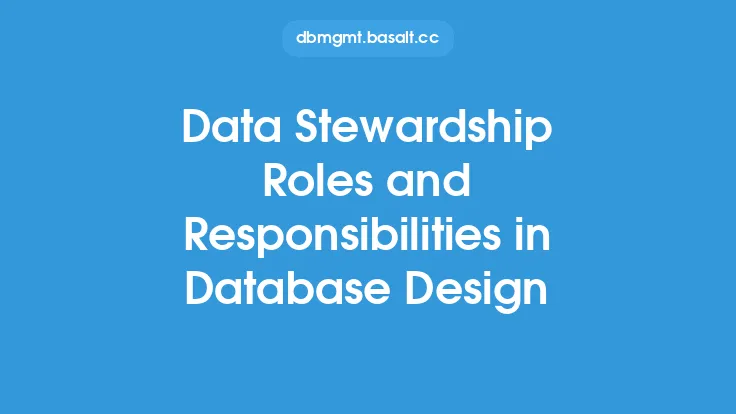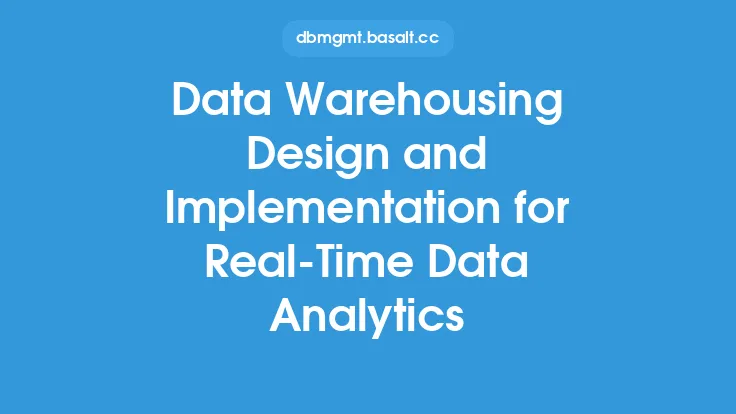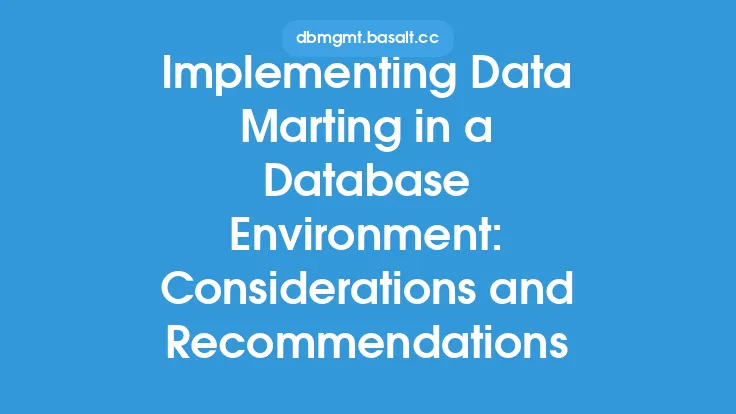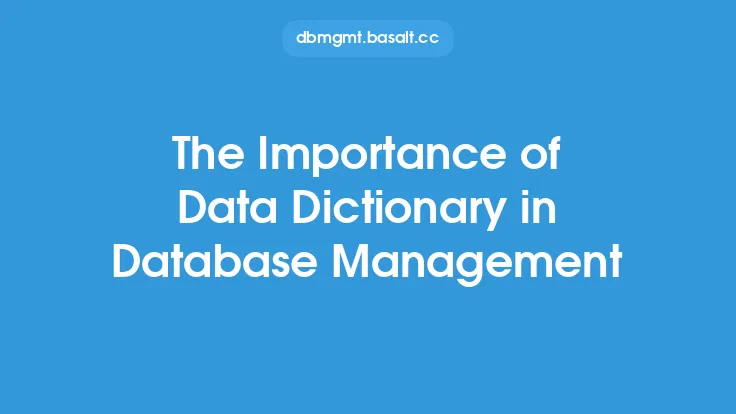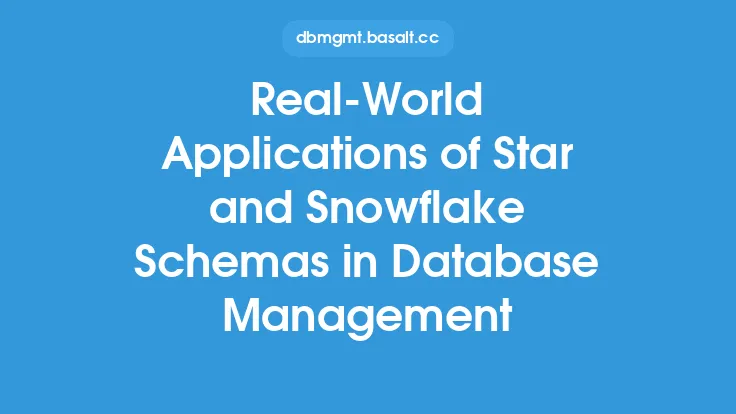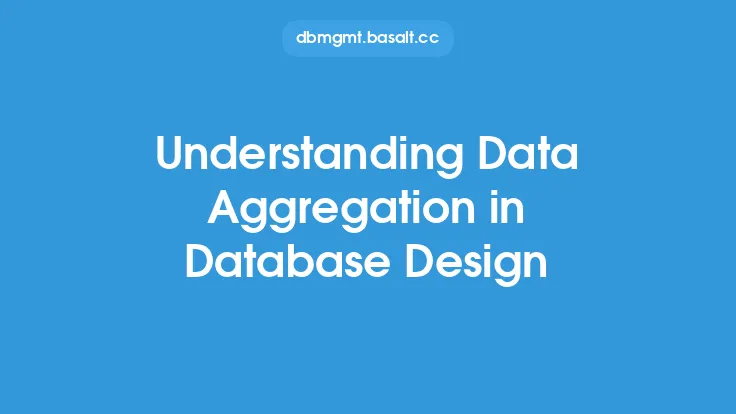Data lineage and metadata management are crucial components of database design, playing a vital role in ensuring the accuracy, reliability, and transparency of data. As data becomes increasingly important for businesses and organizations, the need for effective data governance and management has never been more pressing. In this article, we will delve into the world of data lineage and metadata management, exploring their definitions, importance, and best practices for implementation in database design.
Introduction to Data Lineage
Data lineage refers to the process of tracking and documenting the origin, movement, and transformation of data throughout its entire lifecycle. It involves creating a detailed record of all data sources, transformations, and destinations, providing a clear understanding of how data is created, processed, and used within an organization. Data lineage is essential for ensuring data quality, integrity, and compliance, as it allows organizations to identify and address data errors, inconsistencies, and security breaches. By implementing data lineage, organizations can gain a deeper understanding of their data assets, making it easier to manage, maintain, and leverage their data for business insights and decision-making.
Importance of Metadata Management
Metadata management is the process of creating, storing, and managing metadata, which is "data that describes data." Metadata provides context and meaning to data, making it possible to understand and interpret data correctly. Effective metadata management is critical for ensuring data consistency, accuracy, and completeness, as it enables organizations to define, categorize, and relate data entities, attributes, and relationships. Metadata management also facilitates data discovery, data integration, and data governance, making it easier to locate, access, and use data across different systems, applications, and departments. By implementing metadata management, organizations can improve data quality, reduce data redundancy, and increase data reuse, ultimately leading to better decision-making and business outcomes.
Data Lineage and Metadata Management in Database Design
In database design, data lineage and metadata management are closely intertwined. Database designers must consider data lineage and metadata management when creating database schemas, defining data models, and implementing data governance policies. A well-designed database should include features such as data provenance, data versioning, and data auditing, which enable data lineage and metadata management. Data provenance involves tracking the origin and history of data, while data versioning involves managing different versions of data. Data auditing involves monitoring and logging all data access, modifications, and deletions, providing a clear record of data changes and ensuring data integrity.
Best Practices for Implementing Data Lineage and Metadata Management
To implement effective data lineage and metadata management in database design, several best practices should be followed. First, organizations should establish a clear data governance framework, defining roles, responsibilities, and policies for data management. Second, database designers should use standardized metadata models and data lineage frameworks, such as the Data Catalog or the Data Lineage Framework. Third, organizations should implement automated data lineage and metadata management tools, such as data integration platforms or metadata management software. Fourth, database designers should ensure data quality and integrity by implementing data validation, data cleansing, and data normalization techniques. Finally, organizations should regularly monitor and update their data lineage and metadata management systems, ensuring that they remain accurate, complete, and up-to-date.
Technical Considerations for Data Lineage and Metadata Management
From a technical perspective, implementing data lineage and metadata management in database design requires careful consideration of several factors. First, database designers must choose the right data modeling techniques, such as entity-relationship modeling or object-relational modeling, to represent complex data relationships and hierarchies. Second, organizations must select appropriate metadata management tools and technologies, such as metadata repositories or data catalogs, to store and manage metadata. Third, database designers must implement data lineage tracking mechanisms, such as data provenance or data versioning, to monitor data changes and movements. Fourth, organizations must ensure data security and access control, implementing features such as data encryption, access controls, and auditing to protect sensitive data. Finally, database designers must consider data scalability and performance, ensuring that data lineage and metadata management systems can handle large volumes of data and high transaction rates.
Benefits and Challenges of Data Lineage and Metadata Management
The benefits of implementing data lineage and metadata management in database design are numerous. First, organizations can improve data quality and integrity, reducing errors and inconsistencies. Second, organizations can increase data transparency and accountability, providing a clear understanding of data origins and movements. Third, organizations can enhance data governance and compliance, ensuring that data is managed and used in accordance with regulatory requirements. Fourth, organizations can improve data discovery and reuse, making it easier to locate and access data across different systems and applications. However, implementing data lineage and metadata management also presents several challenges, including the need for significant upfront investment, the complexity of metadata management, and the requirement for ongoing maintenance and updates.
Conclusion
In conclusion, data lineage and metadata management are essential components of database design, playing a critical role in ensuring data accuracy, reliability, and transparency. By implementing data lineage and metadata management, organizations can improve data quality, increase data transparency, and enhance data governance and compliance. While implementing data lineage and metadata management presents several challenges, the benefits far outweigh the costs, making it a crucial investment for organizations seeking to leverage their data assets for business insights and decision-making. As data continues to grow in importance, the need for effective data lineage and metadata management will only continue to increase, making it a vital aspect of database design and data governance.
